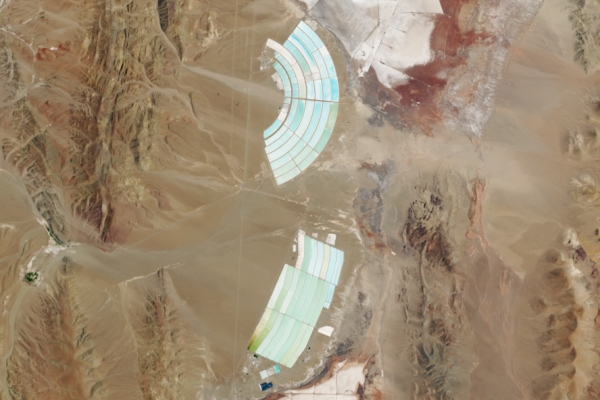Some of the largest known deposits of lithium—a soft silvery metal that powers batteries in cell phones, laptops, and electric vehicles—lie in one of the driest places on Earth.
Some of the largest known deposits of lithium—a soft silvery metal that powers batteries in cell phones, laptops, and electric vehicles—lie in one of the driest places on Earth. Much of the surveyed deposits of this metal are located in the arid salt flats of South America, where Chile, Argentina, and Bolivia meet.
The Altiplano-Puna Plateau is an elevated 500,000-square-kilometer area in the Central Andes, and the second highest plateau on Earth after the Tibetan Plateau. Several climatic and geologic factors converged in these dry plains to create large underground lithium deposits.
The Altiplano-Puna sits on one of Earth’s largest known reservoirs of active magma. Although the area receives very little precipitation (less than 30 centimeters [12 inches] a year), hydrothermal fluids associated with this volcanic activity naturally replenish underground aquifers. Over time, rocks containing trace quantities of lithium have weathered causing the metal to build up in the aquifers. According to the U.S. Geological Survey, about half of the world’s measured lithium resources are in these underground deposits in Bolivia, Argentina, and Chile, an area known as the “lithium triangle.”
Read more at: NASA Earth Observatory
Photo Credit: Wanmei Liang, NASA




